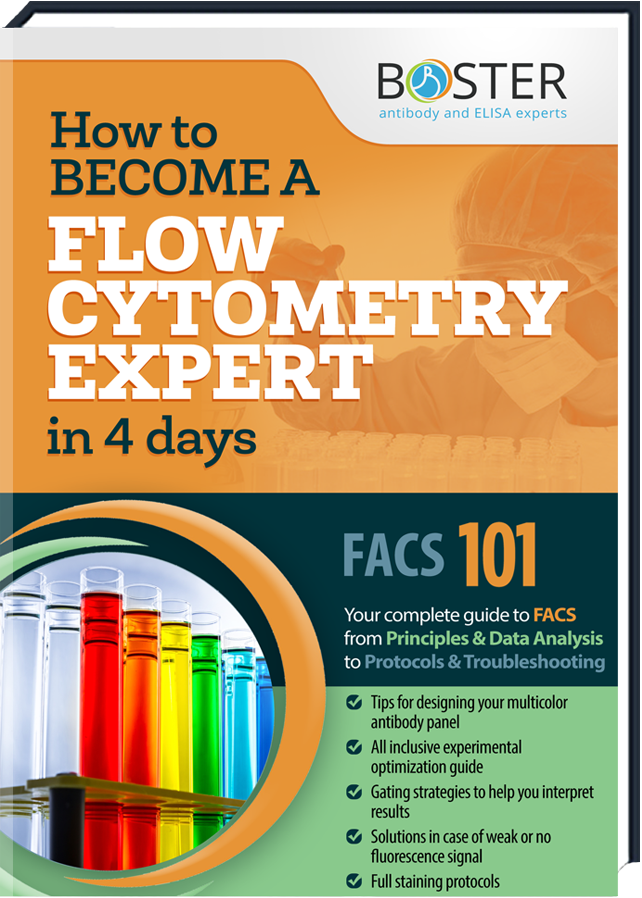Flow Cytometry Application Guide
Wie Sie schnell zum Flow Cytometry Experten werden?
Registrieren Sie sich auf der Homepage um das Handbuch zu erhalten
Alles rund um die Flow Cytometry-Methode erfahre!
Holen Sie sich das Handbuch und werden Sie mit geringem Aufwand zum FACS Experten.

Inhaltsverzeichnis
- Introduction
- Principles of Flow Cytometry
- The Flow Cytometer
- FACS Fluidics system
- FACS Optics I : Detection – Lasers and Types of Optical Filters
- FACS Optics II : Processing – and Quantification of Signals
- Electrostatic Sorting of Cells
- The Fluorophores
- The Basis of Fluorescence – Excitation and Emission
- Common Fluorophores and Spectral Characteristics
- Selecting the Right Fluorophore Conjugate (Key Properties)
- Single and Tandem Dyes
- Spectral Overlap and Compensation
- FACS Data Acquisition and Analysis
- FACS Data Display – What does FACS data look like?
- FACS Data Analysis – Gating Strategies
- Sample Preparation and Protocols
- Preparation of Cells for FACS Staining
- Preparation of Suspension Culture Cells
- Preparation of Adherent Culture Cells
- Preparation of Cryopreserved Cells
- Preparation of Blood Mononuclear Cells
- Preparation of Cells from Tissues
- Common FACS Staining Protocols
- Direct Immunostaining of Surface Antigens
- Indirect Immunostaining of Surface Antigens
- General Immunostaining of Intracellular Antigens – Permeabilization Methods
- Intracellular Cytokine Stimulation and Phospho-immunostaining
- Dye Efflux Staining
- DNA Content and Cell Cycle Analysis
- Optimization Tips
- Sample Preparation and Cell Quality
- General Immuno-staining (Fluorescence Staining)
- Intracellular Staining: Fixation and Permeabilization
- Multicolor Panel Design
- Experimental (Staining) Controls
- Troubleshooting Guide
- Weak Fluorescence Intensity or No Fluorescent Signal
- Excess Fluorescent Signal
- High Background or Non-specific Staining
- High Background Scatter or Abnormal Scatter Profile of Cells
- Abnormal Event Rate
- Loss of Epitope
- FAQs
- Ordering Information




